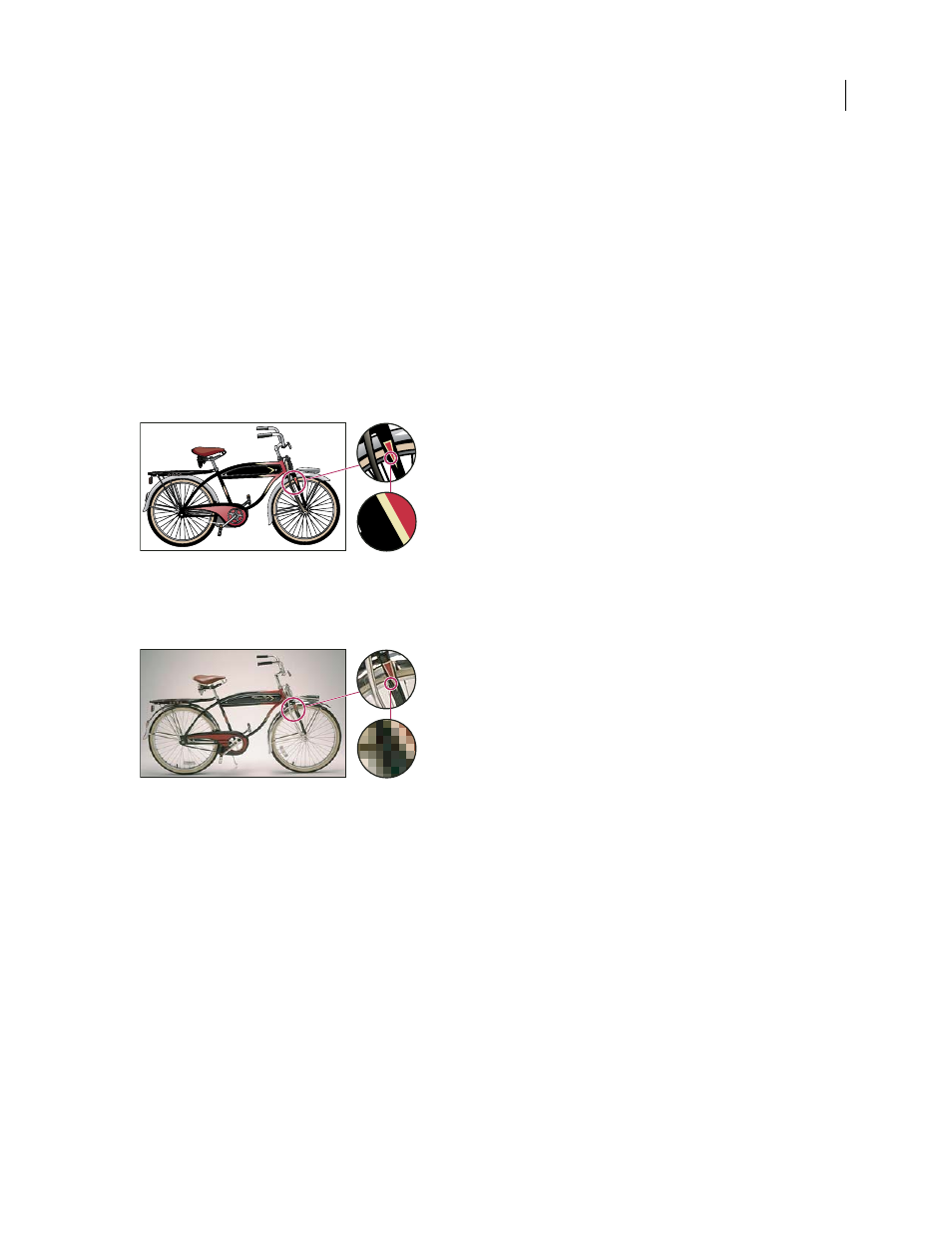Shape layers overview, About vector graphics and raster images – Adobe After Effects CS3 User Manual
Page 317

AFTER EFFECTS CS3
User Guide
312
Shape layers overview
About vector graphics and raster images
Vector graphics are made up of lines and curves defined by mathematical objects called vectors, which describe an
image according to its geometric characteristics. Examples of vector graphics elements within After Effects include
mask paths, shapes on shape layers, and text on text layers.
Raster images (sometimes called bitmap images) use a rectangular grid of picture elements (pixels) to represent
images. Each pixel is assigned a specific location and color value. Video footage, image sequences transferred from
film, and many other types of images imported into After Effects are raster images.
Vector graphics maintain crisp edges and lose no detail when resized, because they are resolution-independent. This
makes vector graphics a good choice for visual elements, such as logos, that will be used at various sizes.
Example of a vector graphic at different levels of magnification
Raster images each consist of a fixed number of pixels, and are therefore resolution-dependent. Raster images can
lose detail and appear jagged (pixelated) if they are scaled up.
Example of a raster image at different levels of magnification
Some images are created as vector graphics in another application but are converted to pixels (rasterized) when they
are imported into After Effects. If a layer is continuously rasterized, After Effects reconverts the vector graphics to
pixels when the layer is resized, preserving sharp edges. Vector graphics from Flash SWF, PDF, EPS, and Illustrator
files can be continuously rasterized.
To see a video tutorial on using the drawing and painting tools, go to the Adobe website at
.
See also
“Continuously rasterize a layer containing vector graphics” on page 151
24:1
3:1
24:1
3:1
